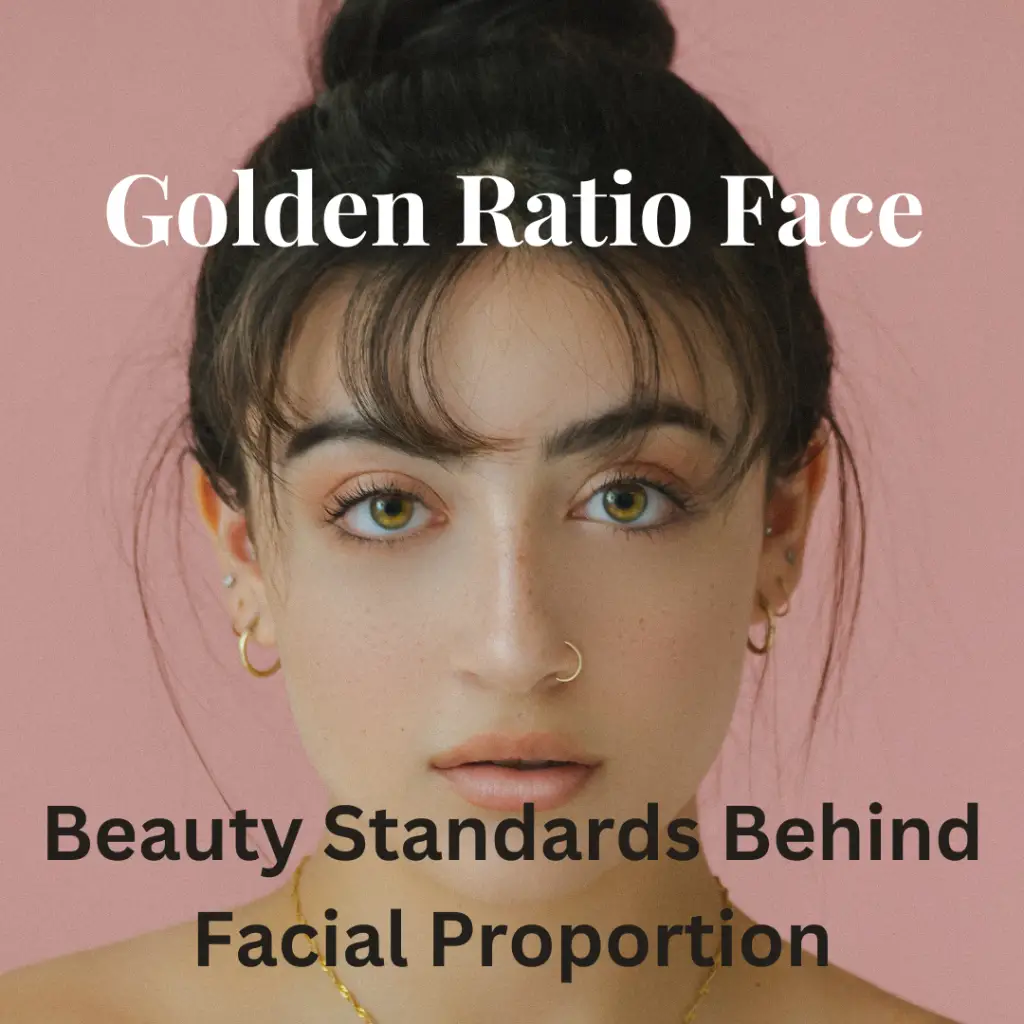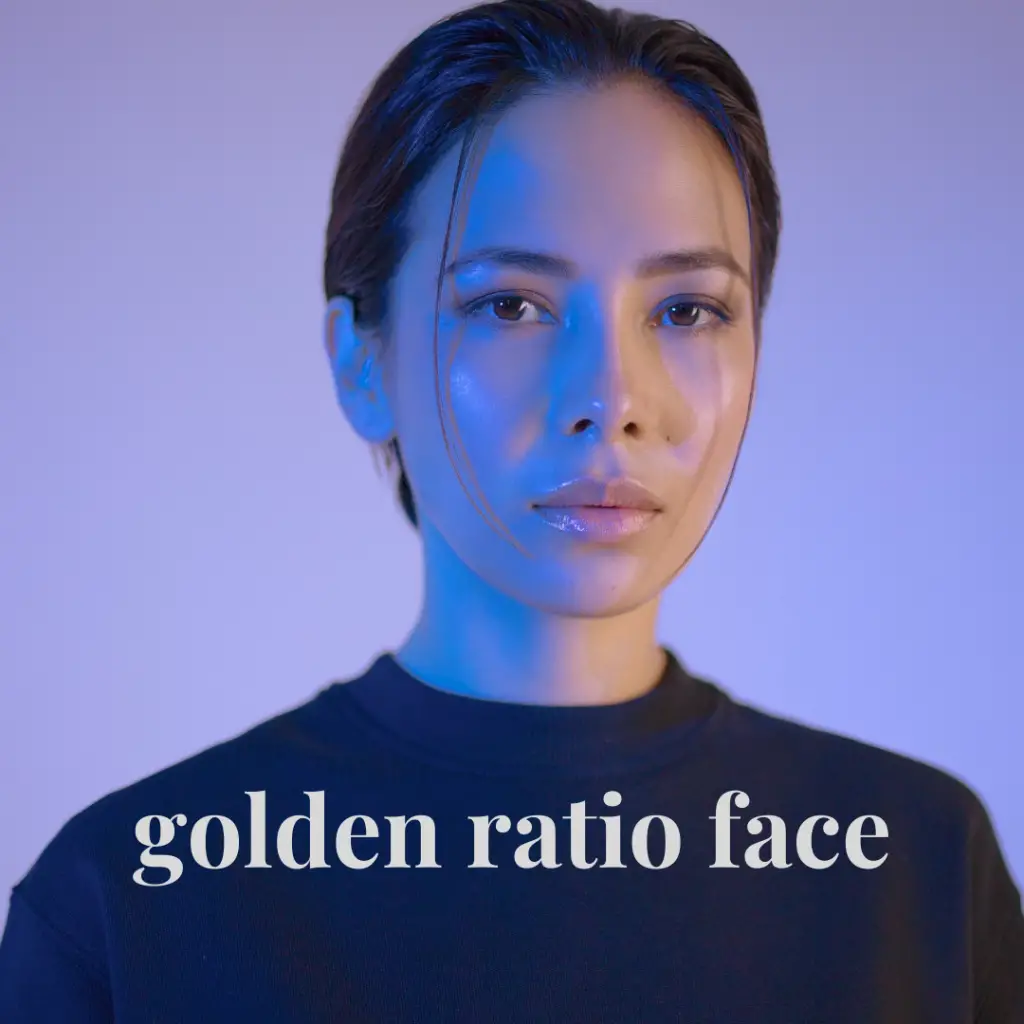The golden ratio face is a term used to describe a face that is said to be in perfect proportion according to the golden ratio. The golden ratio is a mathematical ratio of approximately 1.618:1, which is found in various aspects of nature, art, and design. In the context of the face, it refers to the ideal proportions of the eyes, nose, mouth, and other facial features that are said to be aesthetically pleasing to the human eye.

The concept of the golden ratio face is based on the belief that the closer the proportions of a face are to the golden ratio, the more attractive it is perceived to be. Proponents of the golden ratio face argue that these proportions create a sense of balance and symmetry, which are key factors in facial attractiveness.
While the golden ratio face is often associated with physical beauty standards, it is important to note that beauty is subjective and culturally influenced. The golden ratio is simply one of many factors that can contribute to facial attractiveness, and not everyone will agree on what constitutes a “perfect” face according to this standard.
The mathematics behind the golden ratio face
The mathematics behind the golden ratio face involve applying the golden ratio to the different features of the face, such as the eyes, nose, and mouth. The golden ratio is a mathematical ratio of approximately 1.618:1, which is found in various aspects of nature, art, and design.
To apply the golden ratio to the face, measurements are taken of the distance between various features and compared to the ideal golden ratio. For example, the distance between the eyes should be approximately 1.618 times the width of a single eye, and the distance between the eyes and the mouth should be approximately 1.618 times the distance between the eyes.
Other measurements that can be used to determine the golden ratio face include the distance between the hairline and the eyebrows, the width of the nose in relation to the width of the face, and the distance between the mouth and the chin in relation to the overall height of the face.
It is important to note that while the golden ratio can be applied to the face, it is not the only factor that determines facial attractiveness. Factors such as symmetry, proportion, and cultural influences also play a role in determining what is considered attractive.
Celebrities with a golden ratio face
While there is no definitive list of celebrities with a golden ratio face, some celebrities are often cited as having facial features that closely match the ideal proportions of the golden ratio. Here are a few examples:
Scarlett Johansson: The distance between her eyes, the width of her nose, and the distance between her nose and lips all closely approximate the golden ratio.
Henry Cavill: His facial features, including the distance between his eyes and the width of his nose, are said to closely match the golden ratio.
Beyoncé: Her facial features, including the distance between her eyes and the width of her nose, are often cited as being close to the golden ratio.
Angelina Jolie: The distance between her eyes, the width of her nose, and the distance between her nose and lips are all said to be close to the golden ratio.
David Beckham: His facial features, including the distance between his eyes and the width of his nose, are said to match the golden ratio.
It’s important to note that these examples are based on subjective assessments and may not be universally agreed upon. Attractiveness is a complex and multifaceted concept, and the golden ratio is just one of many factors that contribute to facial attractiveness.
Psychological impact on human perception
The golden ratio face has significant psychological implications for human perception of beauty and attractiveness. Studies have shown that faces with proportions that closely match the golden ratio are perceived as more attractive and beautiful by both men and women.
One reason for this may be that the golden ratio is found in many aspects of nature and art, and therefore is believed to be inherently pleasing to the human eye. Our brains may be wired to respond positively to faces that conform to this ideal, as they are perceived as more balanced, harmonious, and symmetrical.
The psychological impact of the golden ratio face goes beyond mere perception of beauty, however. Research has shown that people with facial features that closely approximate the golden ratio may be perceived as more trustworthy, competent, and intelligent.
This is likely due to the fact that the golden ratio is associated with balance and harmony, and these qualities are often perceived as indicators of good character and intelligence. People who have facial features that closely match the golden ratio may therefore be perceived as more capable and reliable.
It’s important to note, however, that these perceptions are influenced by cultural and societal factors, and may vary across different cultures and contexts. The significance of the golden ratio face is therefore a complex and multifaceted topic that requires further research and discussion.
The role of the golden ratio face in beauty standards
The golden ratio face has played a significant role in shaping beauty standards, particularly in the Western world. The idea that facial features that closely match the golden ratio are inherently more attractive has been promoted by artists, designers, and even scientists for centuries.
This ideal has been perpetuated through popular media, with celebrities and models who possess facial features that approximate the golden ratio often being hailed as the epitome of beauty. This has created a cultural expectation that beauty is equated with facial features that conform to this ideal, leading to a narrow definition of beauty that excludes many people who do not fit this mold.
This narrow definition of beauty has significant consequences, particularly for marginalized groups who do not fit into the narrow beauty standards perpetuated by the media. Women, people of color, and those who do not conform to traditional gender roles are often excluded from these standards, leading to feelings of inadequacy, low self-esteem, and even mental health issues.
It is important to note that beauty is subjective and culturally influenced, and there is no one-size-fits-all definition of what constitutes an attractive face. The golden ratio is just one of many factors that can contribute to facial attractiveness, and should not be used as the sole determinant of beauty standards. Recognizing and celebrating diversity in all its forms is key to promoting a healthy and inclusive society.
How the golden ratio face influences our subconscious

The golden ratio face has been shown to have a subconscious influence on our perception of beauty and attractiveness. Because the golden ratio is found in many aspects of nature and art, it is believed to be inherently pleasing to the human eye.
Research has shown that faces with features that closely approximate the golden ratio are processed more quickly and efficiently by the brain, and are perceived as more attractive and pleasing to look at. This subconscious response may be due to the fact that the brain is wired to respond positively to faces that conform to this ideal, as they are perceived as more balanced, harmonious, and symmetrical.
The influence of the golden ratio face goes beyond mere perception of beauty, however. Studies have shown that people with facial features that closely approximate the golden ratio are perceived as more trustworthy, competent, and intelligent. This subconscious response may be due to the fact that the golden ratio is associated with balance and harmony, and these qualities are often perceived as indicators of good character and intelligence.
The subconscious influence of the golden ratio face has significant implications for our interactions with others, particularly in social and professional contexts. People who possess facial features that approximate the golden ratio may be more likely to be perceived as competent and trustworthy, leading to increased opportunities and success.
It is important, however, to recognize that beauty is subjective and cultural, and that the golden ratio face is just one of many factors that contribute to facial attractiveness. The subconscious influence of the golden ratio face should not be used to perpetuate narrow beauty standards that exclude marginalized groups or to make assumptions about someone’s character based solely on their facial features.
Can the golden ratio face be achieved?
The golden ratio face is a mathematical ideal that represents a specific set of proportions between facial features, and achieving this ideal may be difficult or even impossible for many people. While some individuals may naturally possess facial features that closely approximate the golden ratio, for most people, achieving this ideal requires significant cosmetic alterations.
In recent years, there has been a growing trend towards cosmetic procedures such as rhinoplasty, chin augmentation, and jawline contouring in an effort to achieve a more “golden ratio” facial appearance. However, it is important to note that these procedures can be expensive, risky, and often result in an artificial appearance.
Furthermore, the pursuit of the golden ratio face as the only standard of beauty can be harmful, perpetuating unrealistic and exclusionary beauty standards that can lead to feelings of inadequacy and low self-esteem.
It is important to recognize that beauty is subjective and diverse, and that there is no one-size-fits-all standard for facial attractiveness. Celebrating and embracing natural diversity and individuality can promote a healthy and inclusive society, rather than striving towards a narrow and often unattainable ideal.
Natural occurrence of the golden ratio face
While the golden ratio face is often discussed in the context of cosmetic surgery and artificial beauty standards, it is important to note that many people naturally possess facial features that closely approximate the golden ratio.
Research has shown that there is a strong correlation between facial attractiveness and the degree to which an individual’s facial features conform to the golden ratio. However, it is important to note that this correlation is not perfect and that beauty is subjective and diverse.
There are many examples of people in various cultures throughout history who are considered to have naturally beautiful faces that conform to the golden ratio. For example, ancient Greek and Roman art often depicted idealized human figures with facial features that closely approximated the golden ratio. In contemporary times, celebrities such as Scarlett Johansson, Natalie Portman, and Henry Cavill have been cited as examples of individuals with facial features that approximate the golden ratio.
It is important to recognize, however, that natural occurrence of the golden ratio face is not the only standard for beauty, and that there are many different facial features and proportions that can contribute to facial attractiveness. Celebrating and embracing natural diversity can promote a healthy and inclusive society, and help to combat harmful beauty standards that exclude and marginalize certain groups of people.
The use of facial symmetry and proportion in cosmetic surgery
Facial symmetry and proportion are important factors in cosmetic surgery, as they contribute to overall facial balance and harmony. Cosmetic procedures such as rhinoplasty, chin augmentation, and jawline contouring can be used to improve facial symmetry and proportion, and to enhance the overall appearance of the face.
The golden ratio is often used as a guideline for achieving facial proportion in cosmetic surgery. However, it is important to note that achieving the golden ratio may not be necessary or even desirable for everyone, as beauty standards are subjective and vary across cultures and individuals.
In addition to facial symmetry and proportion, cosmetic surgeons also take into account other factors such as skin quality, aging, and individual facial features when planning and performing procedures. The goal of cosmetic surgery is to achieve a natural and harmonious appearance that is tailored to the individual patient’s needs and preferences.
It is important for patients considering cosmetic surgery to have realistic expectations and to work with a qualified and experienced surgeon who can provide them with personalized advice and guidance. Cosmetic surgery can be a valuable tool for enhancing self-esteem and confidence, but it is important to approach it with a healthy mindset and to prioritize overall health and well-being.
The potential risks and ethical considerations of pursuing a golden ratio face
There are several potential risks and ethical considerations associated with pursuing a golden ratio face through cosmetic surgery or other means.
Firstly, pursuing an idealized standard of beauty such as the golden ratio face can be harmful to mental health and self-esteem, as it can create unrealistic and unattainable expectations for one’s appearance. This can lead to feelings of inadequacy, low self-esteem, and even body dysmorphia, a mental health disorder characterized by a preoccupation with perceived flaws in one’s appearance.
Secondly, pursuing a golden ratio face through cosmetic surgery carries the risk of surgical complications and undesirable outcomes. Cosmetic surgery is a serious medical procedure that requires careful consideration and planning, and carries the risk of infection, bleeding, scarring, and other potential complications.
Thirdly, the pursuit of a golden ratio face can perpetuate harmful and exclusionary beauty standards, which can contribute to social inequality and discrimination. The ideal of a golden ratio face is largely based on Western beauty standards, which may not be applicable or desirable for people of different races, ethnicities, or cultural backgrounds.
Finally, there are ethical considerations surrounding the use of cosmetic surgery for purely cosmetic purposes. Some argue that cosmetic surgery is a frivolous and unnecessary use of medical resources, and that resources should be prioritized for addressing medical issues and improving overall health and well-being.
In summary, while the pursuit of a golden ratio face may be a personal choice for some individuals, it is important to approach it with realistic expectations, awareness of the potential risks, and consideration of ethical implications. It is also important to recognize that beauty standards are subjective and diverse, and that natural diversity and individuality should be celebrated and embraced.
Recommended for you:
In the animal kingdom, eyesight plays a crucial r...
Doe eyes are a term used to describe a particular...
Do you ever wonder what it takes to be that guy...
Beauty comes in all shapes and sizes, and one fea...
The beauty industry is constantly evolving, with ...
If you’ve ever noticed someone with a slit in the...
